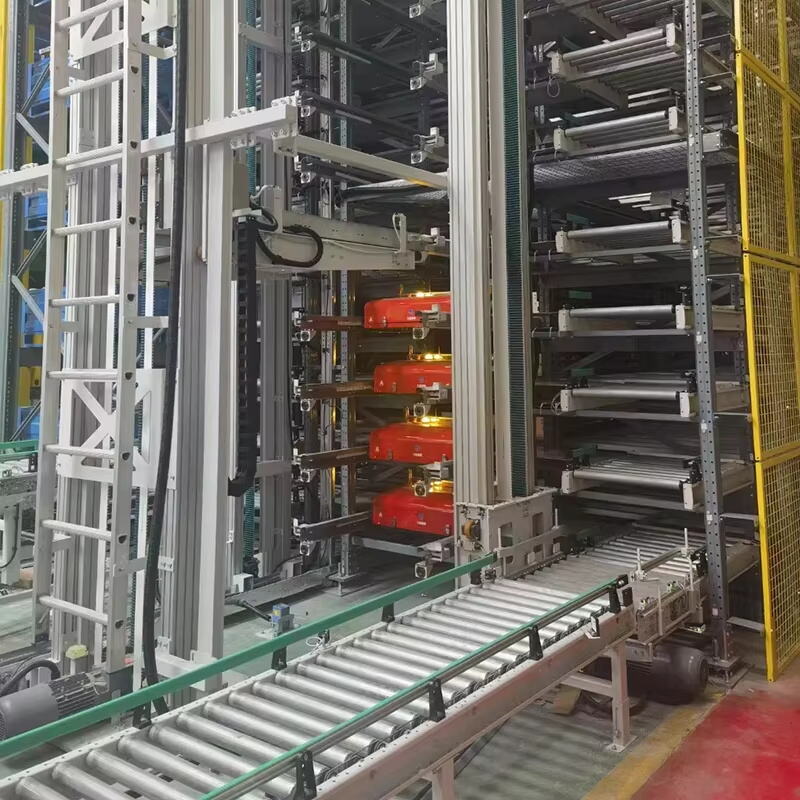What is an Automated Warehouse?
Defining Modern Warehouse Automation
Warehouse automation is changing the game for operations across the board these days. Companies are bringing in robots, AI systems, and advanced software solutions to transform their facilities. What does this mean? Well, tasks like managing stock levels, picking orders, packing boxes, and getting shipments out the door all get handled much faster than before. Modern systems can track products in real time and update inventory counts automatically, which cuts down on mistakes throughout the supply chain. For many businesses, this tech basically replaces hours of manual work. Instead of relying on staff to count items or locate products, managers can focus on growing their operations while keeping track of everything through dashboards and reports. Some warehouses report error rates dropping by half after implementing these automated solutions.
The Growing Importance in Supply Chain Management
As online shopping keeps growing, old fashioned warehouses are transforming into something much more automated if they want to meet what customers now expect from their orders arriving quickly and correctly. According to various industry studies, when companies implement automation systems, they typically see order processing times drop somewhere between 30% and even 50% in some cases. That kind of improvement really boosts how well supply chains function overall. Automated systems also give businesses much better flexibility when scaling up during busy seasons or adjusting to unexpected shifts in the market place. Most warehouse managers will tell anyone who asks that these automated facilities have become essential parts of today's logistics networks. Companies that invest in this technology stay ahead of competition while keeping pace with ever changing customer demands.
Key Benefits of an Automated Warehouse
Enhanced Operational Efficiency and Productivity
Warehouses that go automated tend to boost both efficiency and productivity because they streamline all those tedious tasks like picking items, packing boxes, and getting shipments out the door. When companies actually implement these automation tech solutions, productivity jumps quite a bit. Some research shows warehouses can see anywhere from 25% up to almost 40% improvement just by integrating these systems properly. The machines handle everything in a much more consistent way, cut down on waiting times between steps, and help different departments work together better. This means warehouses can handle way more orders without slowing down or making mistakes. For businesses looking at the bottom line, this translates into smoother day to day running and getting products out faster than ever before.
Reduced Labor Costs and Human Error
When companies implement automated systems, they typically see lower labor expenses because these systems take over many of the repetitive jobs that used to need constant human attention. Around 60 percent of mistakes during order fulfillment actually come down to simple human errors something automation handles much better since machines don't get tired or distracted. As businesses shift away from manual operations toward automation, workers find themselves free to tackle more meaningful work instead of just following routine procedures all day long. Take warehouse staff for example they might spend their time analyzing supply chain data or improving customer service rather than scanning boxes for hours on end. The result? A team that brings fresh ideas to the table while still getting things done efficiently.
Improved Inventory Accuracy and Order Fulfillment
Warehouses that use automation see much better inventory accuracy and faster order processing thanks to real time tracking systems. The tech keeps updating inventory counts all day long, so companies don't run out of products they need or end up stuck with too much stock. When it comes to filling orders, automated systems hit around 99% accuracy most of the time. That means customers generally get what they want when they want it, which makes everyone happy. With clearer pictures of what's actually on hand, managers can predict demand patterns better and keep shelves stocked appropriately. This kind of visibility helps match inventory levels to what people are actually buying, saving money on excess inventory while still making sure orders ship on time.
Overall, the embrace of automated warehouse technologies presents transformative opportunities for operational improvement, and businesses adopting these solutions are well-positioned to navigate complex logistical landscapes with agility and efficiency.
Critical Considerations Before Implementing Automation
Evaluating Initial Investment and ROI Timelines
Getting serious about warehouse automation means first looking at the big ticket price tag involved. A good cost benefit analysis is pretty much mandatory before moving forward. When doing this analysis, companies need to factor in things like what the equipment will cost upfront, how much they'll spend on software licenses, plus all the money they might save down the road through less reliance on manual labor and better overall productivity. Most industry pros point out that successful automation efforts typically see their money back somewhere between two and five years after implementation. That kind of timeframe makes sense financially for most businesses wanting to see real returns without waiting forever. Tracking these financial markers isn't just about numbers on paper either it actually connects day to day operations with bigger picture business objectives when it comes to implementing automated solutions.
Assessing Operational Complexity and Business Fit
Before jumping into automation, companies need to figure out if it actually makes sense for how complex their operations are and what kind of business they run. Things like how big the inventory gets, how many orders come in daily, and how varied the products are all play a role in whether automation will work well. Getting fancy tech isn't enough if it doesn't slot right into current workflows. Talking to people who specialize in automation often gives companies a clearer picture about whether a system can grow with them and handle changes down the road. These conversations help spot problems before they become expensive headaches and make sure whatever gets implemented really tackles the unique challenges facing each business. Taking this careful approach keeps money from being wasted on automation that simply doesn't fit current requirements or where the company might be heading next.
Scalability: Growing with Automated Systems
Adapting to Increasing Order Volumes
One major benefit of automated warehouses lies in their ability to scale up when needed, helping companies cope with rising order numbers especially around busy times. Systems like robotic arms and those fancy storage retrieval setups (often called AS/RS) really cut down on operational headaches when demand suddenly jumps. Take Black Friday for example most warehouses struggle to keep up but with automation they just crank things up a notch and everything keeps running smoothly. Plus, businesses looking to branch out into new territories or launch additional products find it much easier with automated systems since there's no real limit to how much extra work they can handle. What makes all this possible? Well, these systems generate tons of useful data that managers can look at to plan ahead. By watching trends and patterns, companies get a heads up about potential bottlenecks before they even happen, which means they're always ready for whatever comes next in terms of customer demand.
Flexible Solutions for Future Expansion
Looking ahead, modular automation offers companies a way to upgrade their systems bit by bit rather than overhauling everything at once. This step-by-step method means businesses can expand as needed without throwing their current operations into chaos. What's more, these adaptable systems work well with new tech stuff like AI and IoT devices, giving companies access to tools they'll need when facing whatever comes next in the industry. Companies that invest in systems that can scale up as demand grows are actually doing themselves favors both now and down the road. They meet today's demands while setting themselves up to handle whatever market changes come along. Sticking with this kind of strategy keeps businesses nimble enough to stay ahead of competitors who might be stuck with outdated equipment.
Overcoming Implementation Challenges
Navigating Technical Integration Hurdles
Bringing automated systems together with old IT setups remains a real headache for most businesses. The whole thing gets complicated fast because different systems talk different languages technically speaking. That's why smart companies hire experienced IT folks who know how to bridge these gaps without causing major headaches during the transition. Many organizations start small first by testing automation on just one part of their operations. Running a pilot lets them spot problems before they become disasters. For instance, maybe the inventory tracking doesn't sync properly with shipping software. Fixing those kinks ahead of time means less downtime later when everything goes live across the entire warehouse. Companies that tackle these roadblocks early usually find their automated systems pay off much faster than those waiting until something breaks.
Ensuring Proper Maintenance and Workforce Training
Regular maintenance keeps automated systems running smoothly, which helps prevent expensive breakdowns and makes sure equipment lasts longer. Still, just doing maintenance work isn't sufficient for most operations. Companies need to invest time and resources into training their workers as well. When employees know how to properly run and fix these complex machines, they reduce problems and wasted time during production. Ongoing learning sessions matter a lot too because they help workers stay current with all the newest tech improvements happening in automation fields. Putting together good maintenance practices with solid employee training gives businesses better value from what they spend on automation technology. Plus it builds up a team of knowledgeable staff who won't be caught off guard when new technologies come along down the road.
Conclusion: Is Automation Right for Your Business?
Key Indicators It's Time to Automate
There are telltale signs most companies miss when thinking about bringing in automation solutions. When orders keep getting delayed week after week, customers start sending angry emails, and the bottom line keeps shrinking month over month, that's usually when businesses should take notice. Growth sprees where order numbers suddenly double or triple without proper staffing adjustments also point to potential trouble spots. And let's face it nobody wants their staff working 80 hour weeks just to keep up with demand. Looking at actual numbers makes all the difference too. Tracking how long products spend moving through the system and counting errors helps pinpoint exactly when automation becomes worth considering. Companies that regularly check these stats tend to stay ahead of competition while keeping pace with what customers expect nowadays.
Strategic Planning for Successful Adoption
Getting automation right starts with having a good plan in place from day one. A clear roadmap helps define what we want to achieve through these investments and sets realistic expectations about results. When companies bring key people into discussions early on, everyone tends to be on the same page regarding what success looks like, which makes securing buy-in much easier for big ticket items. Regular check-ins and adjustments become really important over time since markets change fast and so does technology itself. Keeping strategies fresh means they stay relevant to company objectives while also accounting for new tools coming onto the scene. Smart organizations know this flexibility allows them to roll out changes without major disruptions and get the most value possible from their automation efforts.
Frequently Asked Questions (FAQ)
What is the primary advantage of an automated warehouse?
The primary advantage of an automated warehouse is improved operational efficiency and productivity. Automation significantly streamlines operations, reducing the need for manual labor and minimizing human errors.
How does warehouse automation impact labor costs?
Warehouse automation reduces labor costs by minimizing dependency on manual labor for repetitive tasks. It allows for reallocating human resources to strategic roles that add value to the business.
Is warehouse automation suitable for all types of businesses?
Warehouse automation is not one-size-fits-all. It is important for businesses to evaluate their operational complexity, order volume, and inventory size to determine if automation is a suitable fit.
What are common challenges when implementing automated systems?
Common challenges include technical integration with existing infrastructure, high initial costs, and the need for comprehensive workforce training to operate and maintain the systems effectively.

